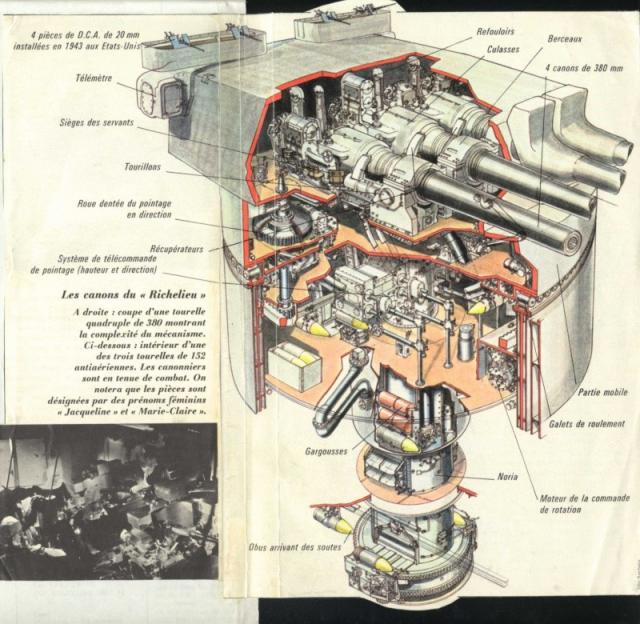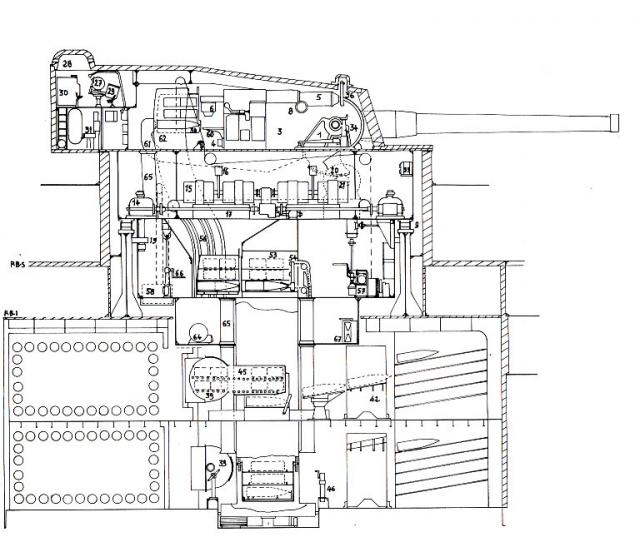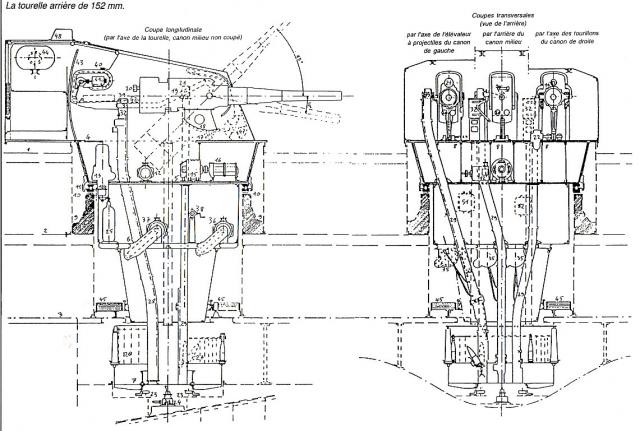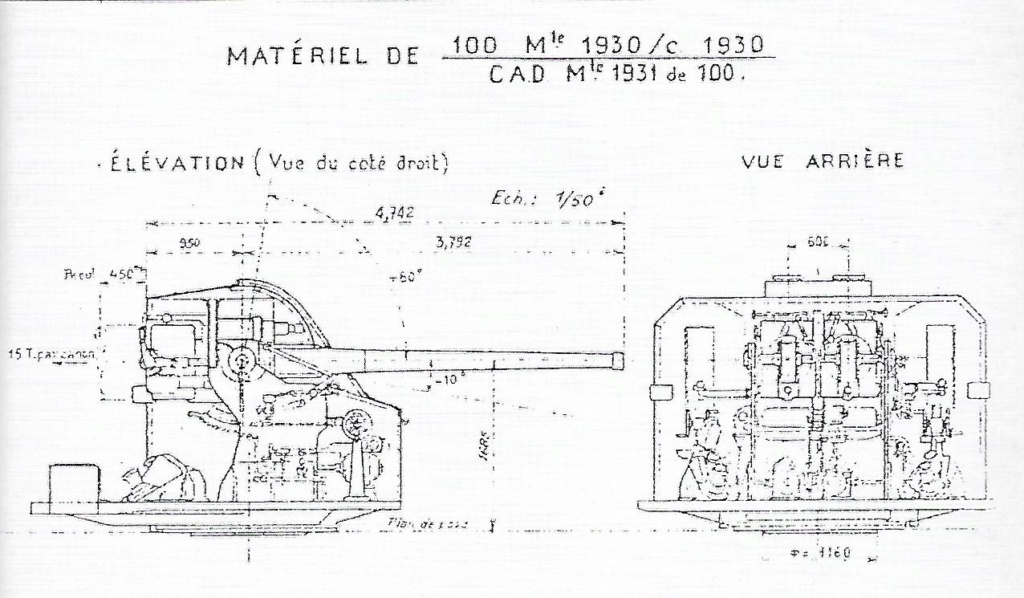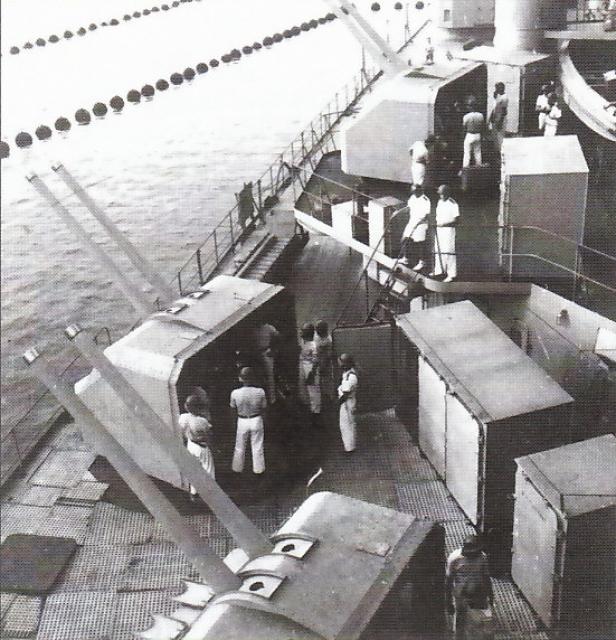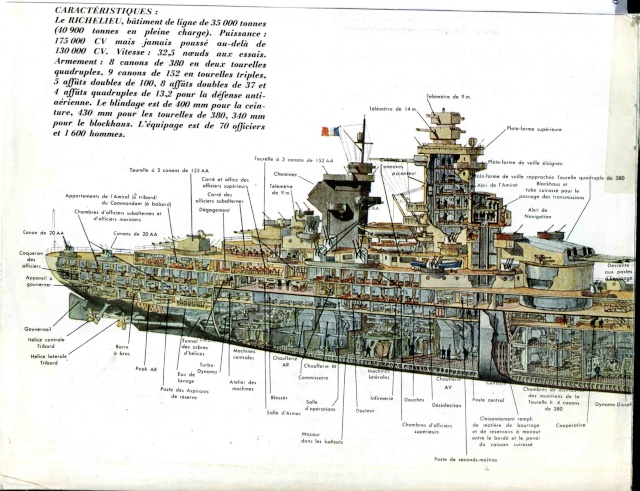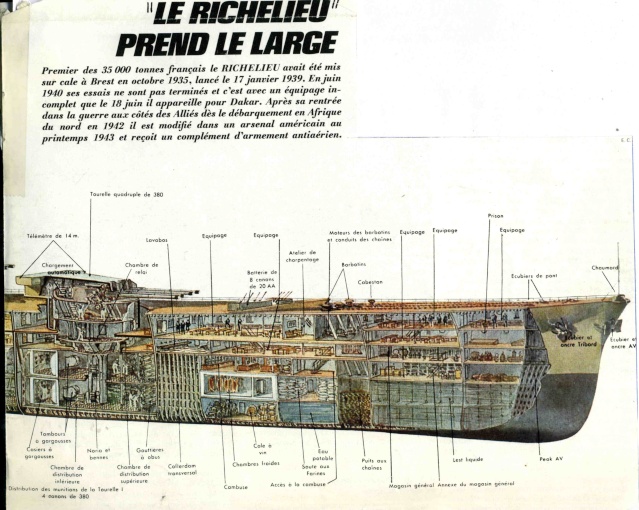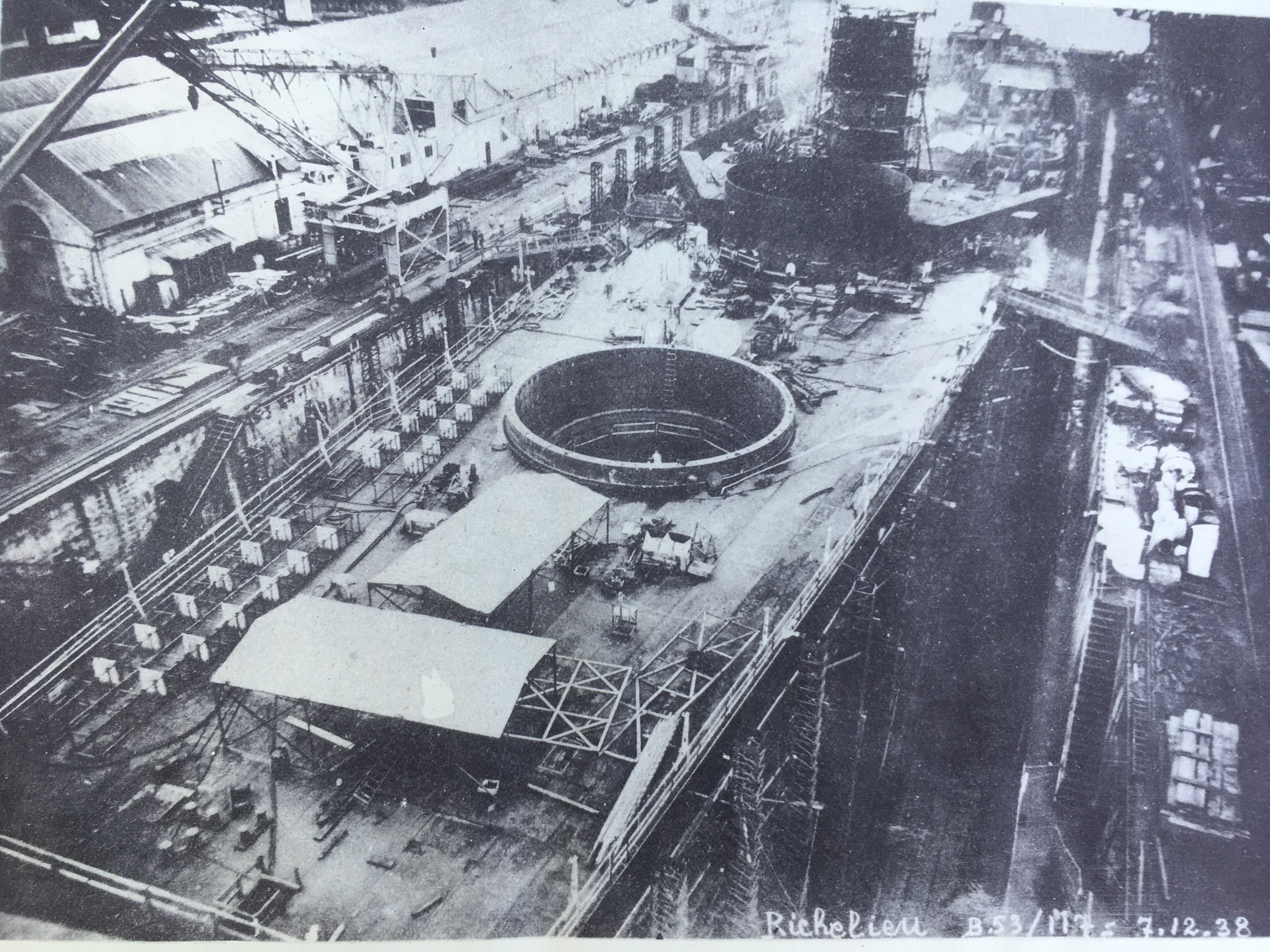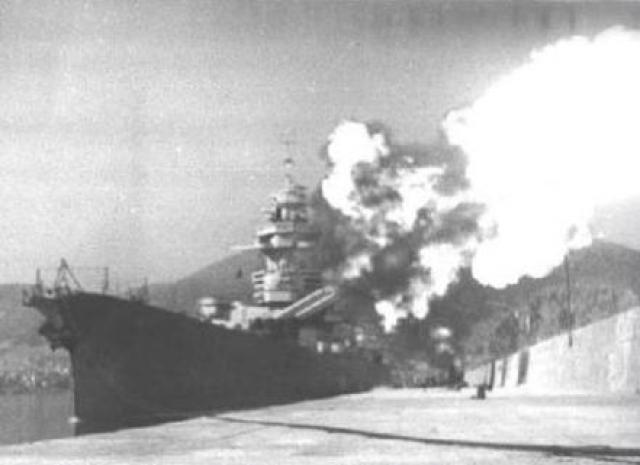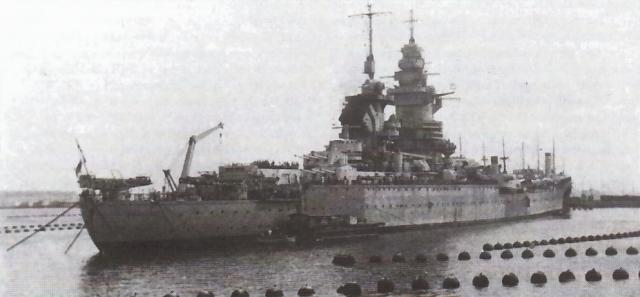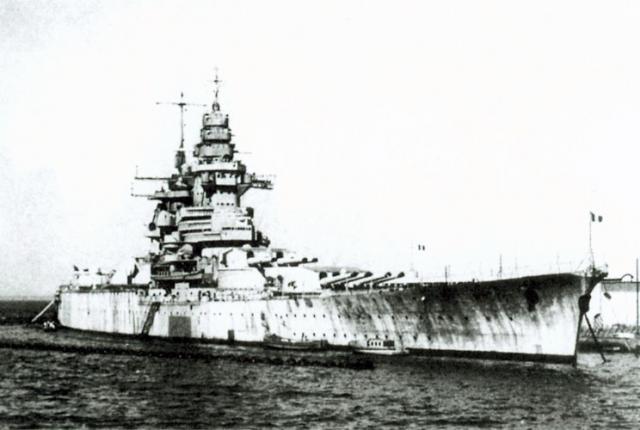- Yes
- No
About the Richelieu and its interest in War Thunder
Although we have yet to see the more modern and state of the art battleships in War Thunder, the recent additions of heavier warships certainly pave the way for future implementations in the game. The Richelieu is no exception. It’s unique configuration and armament, it’s importance, as well as the fact that it is the biggest and most advanced warship the French navy ever had during WW2, are obvious reasons why it is an absolute must as part of a future complete French navy.
History of the Richelieu class
During the 1930’s the French navy was trying to find a way to rearm its fleet to compete with the rest of the major European powers. Although the Washington treaty had limited the size of its fleet and the scope of its modernization, The biggest problem was the speed at which rival fleets were developing. Be it the Reggia Marina or the Kriegsmarine, both were modernizing at an alarming rate. The appearance of the Deutschland class convinced the French navy to build two battleships to confront that new threat. Those would eventually be Dunkerque and Strasbourg. However, the Reggia Marina, which felt threatened by the appearance of this new class of battleships, launched the construction of new warships surpassing the Dunkerque class in every way : The Littorio class. The French answer was immediate, and a few days after the specs of the Littorio class were officially revealed, the French navy started working on a new battleship class, which would eventually become the Richelieu class. Its requirements were the following :
-
35 000t
-
380/406mm main artillery
-
a versatile secondary artillery
-
360mm armored belt, 160mm deck belt, and underwater protection similar to the Dunkerque class.
-
30 knots speed
5 projects with different turret configuration were considered ; in the end, it was the project n°1, following the Dunkerque configuration, which was selected, but with bigger caliber turrets for the primary and secondary artillery. The final blueprint of the ship was finalized in August 1935. The construction of two warships began in October 1935, although it was slowed by several factors, including British meddling trying to limit the Arms race, and economic difficulties. The failure of the London treaty in 1936 convinced the navy to accelerate the construction of the construction of the Richelieu despite British insurance that their fleet would take care of the sea if a conflict was to arise. When the war came in 1939, finishing the ship became a priority, and after weeks of hard work, the ship was ready for trials, which began in January 1940, up until its final trials in June, when the ship’s performances were pushed to its limits, and it reached 32.63 knots. It weighted 43 800t.
The Richelieu during the war :
After months of trials and weapons installation, the Richelieu was almost ready when the war took a bad turn. With a limited stock of ammunition, it departed on June 18th, 1940, as a Panzer Division was approaching the harbor. It sailed with a destroyer escort until the 23rd of June to Dakar. After Operation Catapult, the ship braced for a British attack. This one ultimately came on July 8th, 1940. The Richelieu was attacked by a torpedo boat, as well as Swordfish planes from HMS Hermes. One torpedo hit damaged the ship, leaving moderate damage which took time to repair.
On September 25th, Operation Menace came to be : The British were attacking Dakar with an important fleet. Successive waves of aircrafts from the HMS Ark Royal failed to damage the Richelieu, protected by heavy AA fire. The Richelieu damaged HMS Barham with 152mm artillery fire, but was damaged by the explosion of a defective 380mm shell inside the first turret. It was eventually protected by the destroyer Hardi, which put up a smokescreen between the battleship and the British fleet. Ultimately, the submarine Bévezier torpedoed HMS Resolution, granting victory to the French fleet as the British force retreated with the crippled battleship.
The next 2 years were uneventful, until Operation Torch and the end of the Vichy regime. The fleet in the French empire joined the Allies, and with it, the Richelieu, which rallied the US early 1943. There it was heavily modernized, obtaining numerous telemetry and radar equipment, as well as massive AA defense overhaul. 380mm guns from the Jean Bart were also borrowed to replace the damaged one. It came back to Europe in october 1943. The agony of the Kriegsmarine limited the operation in the Atlantic, and the Richelieu ultimately joined the Allied fleet in the Pacific early 1944 to fight the Japanese. There, it participated to several operation under the order of admiral Sommerville : Operation Cockpit, Transom, Pedal, and Crimson, which aimed at diverting the attention of the Japanese away from the US fleet by attacking their installations in Sabang. Late 1944, the Richelieu came back to Europe to celebrate the liberation of France and for maintenance, then was sent once again in the Pacific to fight against the Japanese. It participated to the attack of Sabang early 1945, and the hunting of the Japanese cruiser Haguro and its destroyer escort, which were destroyed in May 1945.
After the war, the Richelieu came back to France and mostly sailed as the lead ship of the French fleet between France and its colonies. It was modernized here and there, until the 1960’s where it was transformed into a school ship, and ultimately scrapped in 1968.
General Characteristics :
|Tonnage:|35 000 tons (standard) 44 698 tons (max overload)|
|Length:|247.85 m|
|Beam:|33.08 m|
|Draught:|9.22 m|
|Propulsion:|* Parson steam turbines - 5 Sural-Hugé du Templé boilers - 155 000 HP
Max Speed: 32.63 knts (60 km/h)
|Range:|* 9500 nautical miles at 15 knots - 3450 nautical miles at 30 knots|
Crew : 1569 men
Armor :
Vertical protection : main belt : 335-350mm
Horizontal protection : upper bridge : 150-170mm
Horizontal protection : lower bridge : 40mm
Conning tower : 340mm
Main Turrets : 430mm (front), 300mm (roof)
Secondary turrets : 130mm
Armament (1940) :
-
8 x 380mm mle 1935 canons (2 x 4)
-
9 x 152mm mle 1930 canons (3 x 3)
-
12 x 100mm mle 1930 AA canons (6 x 2)
-
8 x 37mm mle 1931 AA canons (4 x 2)
-
16 x 13.2mm Hotchkiss mgs (4 x 4)
Armament (US overhaul, 1943) :
-
8 x 380mm mle 1935 canons (2 x 4)
-
9 x 152mm mle 1930 canons (3 x 3)
-
12 x 100mm mle AA canons (6 x 2)
-
56 x 40mm Bofor AA canons (14 x 4)
-
50 x 20mm Oerlikon guns (50 x 1)
About the 380mm canons :
Spoiler
TURRET SPECS :
Gun depression : -5° / +35°
Gun depression speed : 5.5°/s
Turret rotation : 156° (142° turret n°2)
Turret rotation speed : 5°/s
Max shell capacity : 830
Shells :
879kg explosive shell mle 1949
890kg AP shells ( 10 000- 37 800m range), 249mm pen @ 38 000m
RoF : 1.13-2.2 shot per minutes.
Informations regarding the guns can be found here :
France 380 mm/45 (14.96") Model 1935 and Model 1936 - NavWeaps
About the 152mm mle 1930 guns
Spoiler
Gun depression : -10° / +45°
Gun depression speed : 8°/s
Turret rotation : 150°
Turret rotation speed : 12°/s
Max shell capacity : 1300
Shells :
55kg explosive shell (26960m range),
54 et 58kg AP shells ( 26474m range),
47kg AA shell ( 24200m range).
RoF : 6 shot per minutes.
For more detailed informations :
France 152 mm/55 (6") Model 1930 - NavWeaps
About the 100mm AA canons :
Spoiler
100mm Mle 1931
SPECS :
depression : -10°, +80°
rotation :80°
weight : 13.1 t
100mm Shells :
weight : 22.7 kg (OEA) 24 kg (AP)
Max range : 10 000m
Fire rate : 10 s/m
More infos : France 100 mm/45 (3.9") Model 1930 and Model 1933 - NavWeaps
PHOTOS :
Plans :
Spoiler
Collection of photos can be found here : https://3dhistory.de/wordpress/warship-drawings-warship-blue-prints-warship-plans/french-battleship-drawingsplan-sets-newest-first/french-battle-ship-richelieu-as-build-1940/
Photos of the ship (1937 - 1942)
Photos of the ship (1943 - 1960)
Sources :
Spoiler
FRANCE CUIRASSES CLASSE RICHELIEU - Page 2
FRANCE CUIRASSES CLASSE RICHELIEU - Page 3
Richelieu
Caractéristiques
France 100 mm/45 (3.9") Model 1930 and Model 1933 - NavWeaps
France 380 mm/45 (14.96") Model 1935 and Model 1936 - NavWeaps
https://3dhistory.de/wordpress/warship-drawings-warship-blue-prints-warship-plans/french-battleship-drawingsplan-sets-newest-first/french-battle-ship-richelieu-as-build-1940/
MOULIN Jean, Les cuirassés français en images, Marines Editions octobre 2006
MOULIN Jean, Les cuirassés de la Seconde guerre mondiale en images, Marines Editions juin 2008
SARNET René, LE VAILLANT Eric, Richelieu, Marines editions, 1997

